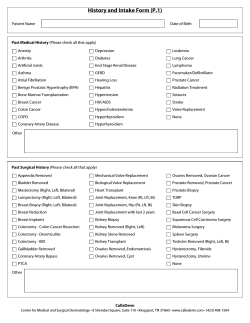
Prostate Imaging and Biopsy Dr Graham Munneke Consultant Interventional Radiologist
Prostate Imaging and Biopsy Dr Graham Munneke Consultant Interventional Radiologist St George’s Hospital London Introduction • • • • • Epidemiology Development of TRUS Guidelines for best practice Morbidity Future changes and challanges History • Ultrasound first used to image the prostate in 1967 • TRUS as we know it developed in the mid 1980’s The Disease • If men live long enough the presence of histological evidence of cancer in the prostate is a almost universal • But only 3% of men die as a consequence of prostate cancer • Most common cancer in men accounting for 25% of new diagnoses in the UK • Prostate cancer is the second highest cause of cancer related death at 13% second only to lung cancer. • 3 fold increase in incidence in black men Diagnosis • • • • • Digital rectal examination PSA level Trans-rectal Ultrasound MRI Biopsy • Between 56 and 89 thousand biopsies in England and Wales per year Diagnosis on ultrasound • Cancer becomes visible on Ultrasound because of surrounding histological changes – Fibrosis, oedema, neo-vascularity • Larger, poorly differentiated and palpable tumours are more likely to be visualised • Contemporary tumors are investigated at an earlier stage and this is not the usual situation • Typical findings: A hypo- echoic nodule in the peripheral zone TRUS • • • • Hypo echoic nodule Increased vascularity Focal bulge in the capsule Loss of definition of the capsule Why Biopsy • • • • • • Most cancers are occult/isoechoic on TRUS The PPV for TRUS was estimated at 60% This is historic Modern cancers are of lower stage and PSA level the PPV is now much lower. Poor PPV because – Poor specificity –BPH • Prostatitis • Calcification – Poor sensitivity • Early grade, isoechoic cancers Gleeson scoring is needed to direct management Anatomy • Peripheral Zone • Central zone • Transitional zone Location of cancer Number of Cores • Increasing cores increases diagnosis • But may increase complications 6 cores 8 cores 10 cores 12 cores Sampling the peripheral Zone Saturation biopsy – 20-40 cores. Local Anaesthetic ± Sedation – Post Procedure observation for 4 hours – Has been reported to be positive in 13-34% of selected patients – Increased complication rate • 8% Urinary retention rate * • 4-12% Major Haemorrhage rate **/*** Pain Relief Pain Relief Two methods: • Apical Infiltration • Basal Infiltration Bleeding Complications Table 9.4: The frequency and Duration of Post Prostate Biopsy Morbidity 35 30 25 % 20 Haematuria 15 PR bleed 10 Haematospemia 5 0 Day 1 Day 2 Day 3 Day 4 Day 5 Day 6 Day 7 Data based on the authors experience of sextant biopsies Future Directions • More accurate mapping of the cancer • Template biopsy • Ablative therapies Current best Practice • NHS Cancer Screening Program: Guidelines for Undertaking a Transrectal Ultrasound Guided Biopsy of the Prostate (Draft) – 10-12 biopsies targeted onto the peripheral zone – Routine Transition zone biopsies are unnecessary – No size correction – At the least the cores should be separated into left and right lobes; best to analyse each core separately
© Copyright 2025





















